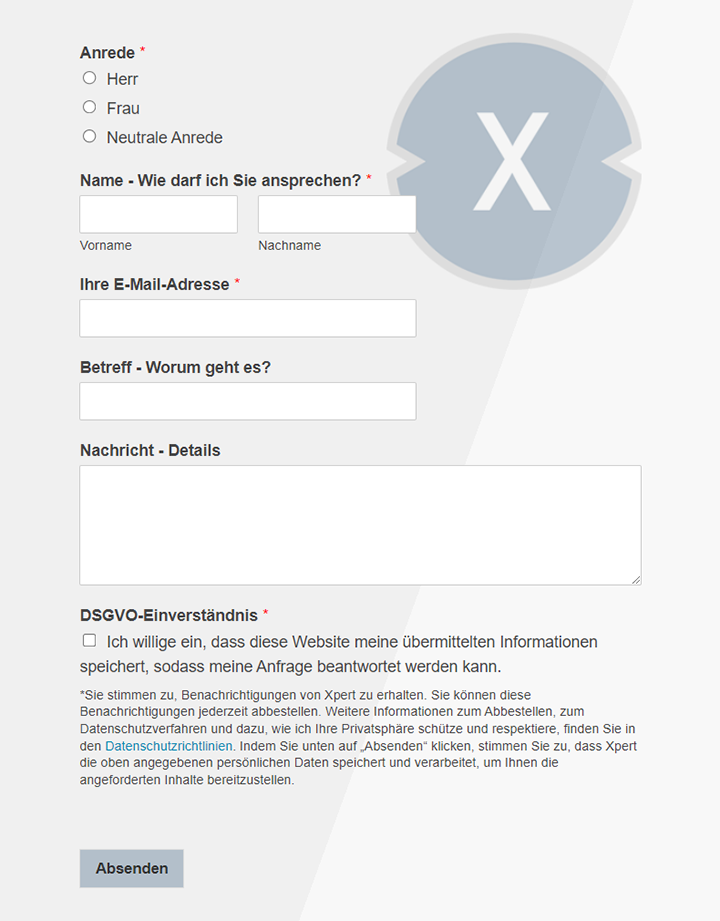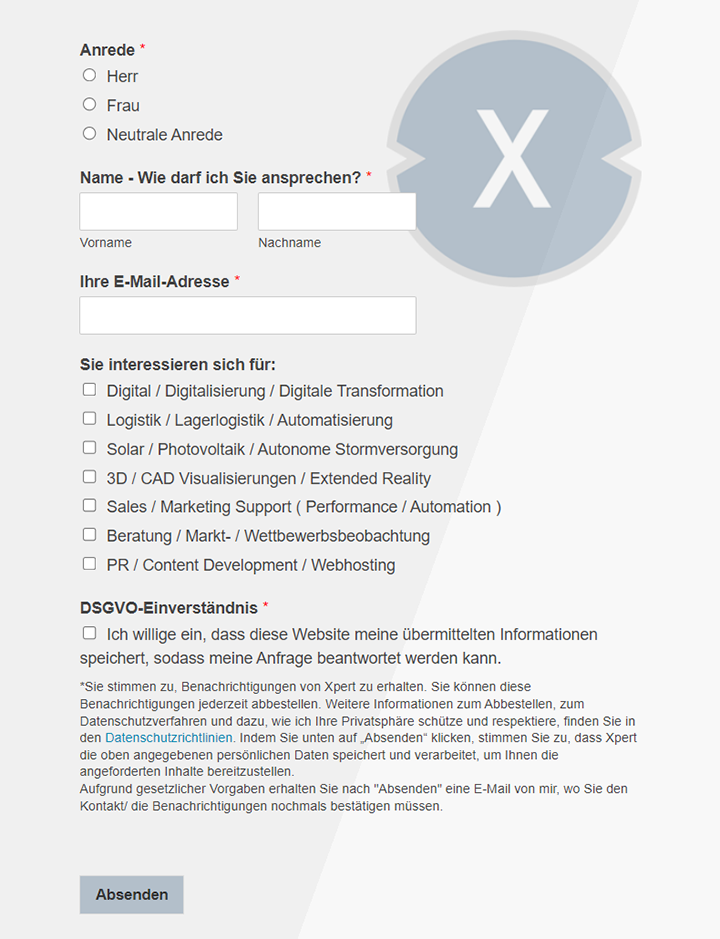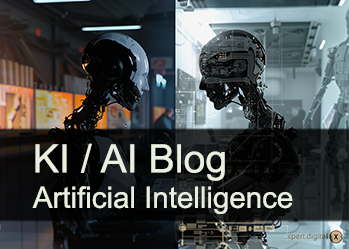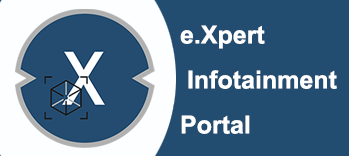China vs. USA in AI: Are DeepSeek R1 (R1 Zero) and OpenAI o1 (o1 mini) really that different?
Xpert pre-release
Language selection 📢
Published on: January 23, 2025 / Update from: January 23, 2025 - Author: Konrad Wolfenstein

China vs. USA in AI: Are DeepSeek R1 (R1 Zero) and OpenAI o1 (o1 mini) really that different? Coincidence or strategic imitation in AI development? – Image: Xpert.Digital
AI technology war: Is DeepSeek the answer to OpenAI? - A brief review
China vs. USA in AI: DeepSeek R1 vs. OpenAI o1 – Strategic imitation or technological innovation?
In the increasingly globalized world of artificial intelligence (AI), the competition between China and the USA is particularly intense. Chinese startup DeepSeek recently introduced two groundbreaking models: DeepSeek R1 Zero and DeepSeek R1. These models are creating a stir in the AI community as they achieve performance comparable to OpenAI's o1 mini and o1 models in benchmark tests. But how similar or different are these systems really, and what does that mean for the future of AI?
DeepSeek R1 Zero: A Reinforcement Learning Revolution
The DeepSeek R1 Zero model is particularly innovative because it was trained exclusively using reinforcement learning (RL). It completely dispenses with human feedback or classic supervised fine-tuning. This makes it a pioneer in the application of reinforcement learning in AI. It shows impressive progress in the development of reasoning skills, including:
- Self-checking: The model analyzes its answers independently and detects errors.
- Reflection: It develops strategies to improve its problem solving.
- Generation of long chains of thought: Complex connections are presented in logical, coherent steps.
A notable aspect is the model's ability to devote more thinking time to specific problems. By rethinking and improving its approach, it shows the potential of reinforcement learning to create autonomous learning systems.
DeepSeek R1: Combination of RL and fine-tuning
In contrast, DeepSeek R1 combines reinforcement learning with classic supervised fine-tuning to better match model responses to human expectations. This hybrid training method allows DeepSeek R1 to achieve excellent results in various application areas:
- Mathematics: It achieved an accuracy of 79.8% on the AIME 2024 (American Invitational Mathematics Examination) and an impressive 97.3% on the MATH 500 test.
- Programming: With a superiority of 96.3% of human participants at Codeforces, it sets a new benchmark.
- General Knowledge: With 90.8% on MMLU (Massive Multitask Language Understanding) and 71.5% on GPQA Diamond, it shows a deep understanding of factual knowledge.
Challenges and special features of the DeepSeek models
Despite their impressive performance, the models show some weaknesses and peculiarities:
- Unintentional language switching: DeepSeek R1 and R1 Zero have a tendency to switch between different languages, which can cause problems in multilingual applications.
- Limited functionality: Both models currently do not support function calls, extended dialogs or JSON output.
- Open availability: DeepSeek R1 is open source and freely accessible under the MIT License. This allows developers to use the model weights and outputs without restriction.
- Smaller Models: DeepSeek has also released six smaller models trained using data from DeepSeek R1. These models offer more flexible application options.
Comparison: DeepSeek R1 vs. OpenAI o1
Both DeepSeek R1 and OpenAI o1 are advanced AI models that specialize in complex reasoning. A direct comparison reveals similarities, but also some striking differences.
1. Performance in benchmarks
DeepSeek R1 achieves comparable, and in some even better, results than OpenAI o1 in many benchmarks:
- Math: DeepSeek R1 scored 79.8% on AIME 2024, while OpenAI o1 scored 79.2%. In the MATH 500 test, DeepSeek R1 with 97.3% is clearly ahead of OpenAI o1 with 96.4%.
- Programming: In the Codeforces test, DeepSeek R1 achieved 96.3%, just behind OpenAI o1 with 96.6%.
- General knowledge: DeepSeek R1 scored 90.8% on MMLU, while OpenAI o1 scored 91.8%.
2. Training methods
The main difference lies in the training methods:
- DeepSeek R1: Uses pure reinforcement learning without supervised fine-tuning.
- OpenAI o1: Combines reinforcement learning with human feedback (RLHF), allowing greater adaptation to human expectations.
3. Cost and accessibility
DeepSeek R1 is significantly cheaper and more accessible than OpenAI o1:
- API Cost: For a million tokens, DeepSeek R1 charges only $0.55 for inputs and $2.19 for outputs, while OpenAI o1 costs $15 and $60, respectively.
- Licensing: DeepSeek R1 is open source and offers full flexibility in use and customization.
4. Special skills
Both models feature advanced reasoning capabilities:
- DeepSeek R1: Develops skills such as self-examination, reflection and the generation of long thought chains through reinforcement learning.
- OpenAI o1: Has been explicitly trained for chain-of-thought reasoning, which allows it to solve complex problems step by step.
Suitable for:
- AI development: o1 from ChatGPT – the new AI model: news, background, possible uses and limitations
- New Content AI o1 from OpenAI: A significant advance in AI technology – The “thinking” AI model
Transparency and control: DeepSeek R1 has the advantage
A remarkable advantage of Deepseek R1 is the transparency of the thinking process. It offers users a deeper insight into its “inner monologue”. This makes it possible to understand and understand the chain of argument where the model makes errors. Openai O1 shows similar skills, but not in the same depth.
Practical application: DeepSeek R1 as an affordable alternative
DeepSeek R1's accessible pricing and open-source nature make it a promising alternative for developers, businesses, and educational institutions. Possible areas of application include:
- Scientific research: solving complex mathematical and scientific problems.
- Programming: optimization and improvement of codes.
- Creative brainstorming: generating innovative ideas and concepts.
- Educational Applications: Support learning and understanding complex topics.
Democratization of AI technology
DeepSeek R1 and R1 Zero impressively demonstrate how reinforcement learning can advance AI development. Their achievements are proof that Chinese companies are increasingly operating on an equal footing with American competitors. By combining innovation, accessibility and low cost, DeepSeek has the potential to have a lasting impact on the AI landscape.
At the same time, it remains to be seen how both systems will perform in real application scenarios. The competition between China and the US in AI development will undoubtedly continue to produce exciting innovations. However, one thing is clear: the democratization of advanced AI technologies has begun.
Our recommendation: 🌍 Limitless reach 🔗 Networked 🌐 Multilingual 💪 Strong sales: 💡 Authentic with strategy 🚀 Innovation meets 🧠 Intuition
At a time when a company's digital presence determines its success, the challenge is how to make this presence authentic, individual and far-reaching. Xpert.Digital offers an innovative solution that positions itself as an intersection between an industry hub, a blog and a brand ambassador. It combines the advantages of communication and sales channels in a single platform and enables publication in 18 different languages. The cooperation with partner portals and the possibility of publishing articles on Google News and a press distribution list with around 8,000 journalists and readers maximize the reach and visibility of the content. This represents an essential factor in external sales & marketing (SMarketing).
More about it here:
Strategy or coincidence? DeepSeek and the global battle for AI leadership - background analysis
The AI giants in comparison: DeepSeek versus OpenAI – A race for the top of artificial intelligence
The world of artificial intelligence (AI) is a dynamic and constantly developing field that is characterized by a constant competition for innovation and excellence. At the center of this competition are two giants: On the one hand, the American company Openai, known for its groundbreaking models such as GPT and its “O1” series, and on the other hand, and on the other hand, the up-and-coming Chinese startup Deepseek with its impressive models such as Deepseek R1 and R1 Zero. The question of whether the latest developments at Deepseek are a random convergence or strategic imitation is the subject of lively discussions and highlights a highlight of the complex dynamics of the global AI competition.
DeepSeek R1 Zero: A paradigm shift through pure reinforcement learning
DeepSeek R1 Zero is a remarkable model that breaks the traditional approach to AI development. Unlike most large language models, which are based on a combination of supervised learning and reinforcement learning from human feedback (RLHF), R1 Zero was trained exclusively using reinforcement learning (RL). This means that the model developed its capabilities without direct human input, without adapting to human preferences. This is a crucial difference that makes R1 Zero a fascinating case for exploring the possibilities of pure RL.
The result is a model capable of developing remarkable cognitive abilities that were previously only achieved through the combination of human feedback and supervised learning. R1 Zero demonstrates:
Self-verification
The model is able to critically question its own conclusions and calculations and to check for errors, which leads to greater accuracy and reliability. It is no longer just a “answer generator”, but an active problem solver who is aware of its own cognitive processes.
reflection
R1 Zero can think about his own thinking processes and learn from it. This means that the model can not only adapt to new data, but also to solve problems in its own way. It is a step towards a “metacognitive” AI.
Generation of long chains of thought
The model can break down complex problems into a number of logical steps and present these steps in a comprehensible and transparent manner. This ability to create long “thoughts” is crucial for solving demanding tasks that require complex reasoning.
Adaptive thinking time
Depending on the complexity of the task, R1 Zero can decide when it has to invest more “thinking time” to solve a problem. This is a dynamic adjustment of the calculation effort that indicates that the model not only stubbornly performs algorithms, but also develops a sense of the difficulty of a task.
These capabilities impressively demonstrate the potential of reinforcement learning as a basis for the development of highly intelligent systems. R1 Zero is proof that it is possible to develop complex cognitive skills without relying on the limitations of human feedback. The implications of this approach for the future of AI research are enormous.
DeepSeek R1: The union of reinforcement learning and fine-tuning
While DeepSeek R1 Zero explores the limits of pure reinforcement learning, DeepSeek R1 takes a different path that represents a synthesis of reinforcement learning and supervised fine-tuning. This model leverages the strengths of both methods to create a system that has both advanced reasoning capabilities and a better fit with human expectations.
DeepSeek R1's impressive performance in various areas is a testament to the effectiveness of this approach:
mathematics
At the AIME 2024 (American Invitational Mathematics Examination), DeepSeek R1 achieved an accuracy of 79.8% and even 97.3% at MATH-500. These numbers suggest that the model can not only solve simple mathematical problems, but is also capable of understanding and applying complex mathematical concepts. It outperforms most human mathematicians on standardized tests.
programming
In the Codeforces competition, a prestigious programming competition, DeepSeek R1 outperformed 96.3% of human participants. The model is able to solve demanding programming tasks, understand complex code and write efficient algorithms.
General knowledge
On the demanding MMLU (Massive Multitask Language Understanding) and GPQA Diamond tests, DeepSeek R1 achieved impressive scores of 90.8% and 71.5%, respectively. These results highlight the model's ability to understand and apply a wide range of knowledge and suggest that it can operate on par with human intelligence.
These achievements make DeepSeek R1 a versatile tool that can be used in a variety of application areas, from scientific research to software development.
Special features and challenges on the way to perfect AI
Despite the impressive progress DeepSeek has made with R1 and R1 Zero, there are also some challenges and limitations to overcome:
Language change
Both R1 and R1 Zero sometimes show a tendency to switch between different languages unintentionally. This inconsistency can impact user experience and requires further improvements in language processing.
Functional limitations
The models currently do not support function calling, extended dialogs, or output in JSON format. These limitations make it difficult to use the models in complex applications that require these features.
Open availability
While the free availability of DeepSeek R1 under the MIT license is a major advantage and allows free use of the model weights and outputs, it also means that the model can potentially be misused for malicious purposes. It is important that the community and developers take responsibility and use the technology ethically.
Smaller open source models
The release of six smaller open source models trained on DeepSeek-R1 data is a significant step toward democratizing AI technology. This enables researchers and developers around the world to access and develop advanced AI technology.
The development of DeepSeek R1 and R1 Zero demonstrates not only the possibilities of reinforcement learning, but also the challenges that must be overcome in creating truly intelligent systems.
DeepSeek R1 vs. OpenAI o1: A direct comparison of the giants
Comparing DeepSeek R1 with OpenAI's o1 model is inevitable as both systems aim to solve complex problems and demonstrate advanced reasoning capabilities. Although both models perform similarly in many areas, there are some key differences that are worth a closer look:
Performance in direct comparison
In many benchmark tests, DeepSeek R1 and o1 show very similar performance. In mathematics, DeepSeek R1 scored 79.8% on AIME 2024, while o1 scored 79.2%. In programming, DeepSeek R1 scored 96.3% in the Codeforces test, while o1 scored 96.6%. On the MMLU general knowledge test, DeepSeek R1 scored 90.8%, while o1 scored 91.8%. These results show that both models compete at a very high level in many areas.
But there are also areas in which DeepSeek R1 outperforms o1. In the MATH 500 test, DeepSeek R1 achieved an impressive accuracy of 97.3%, while o1 achieved 96.4%. These results suggest that DeepSeek R1 may be superior in some specific areas.
Training methods
Reinforcement learning in focus: Both models use reinforcement learning as a basic training method. However, while DeepSeek R1 relies on pure reinforcement learning without prior supervised fine-tuning, o1 combines RL with human feedback (RLHF). This difference in training methods could contribute to the observed differences in performance between models and suggests different philosophies in AI development. While DeepSeek pursues the path of purely algorithmic intelligence, OpenAI relies on refining models through human expertise.
Cost and accessibility
A key difference between the two models is cost and availability. DeepSeek R1 is significantly more cost-effective than o1, with API costs of $0.55 for inputs and $2.19 for outputs per million tokens, compared to $15 and $60 for o1. In addition, DeepSeek R1 is open source and available under the MIT license, while o1 is a proprietary technology. These differences in cost and accessibility make DeepSeek R1 an attractive option for developers and researchers who want to leverage advanced AI technology without major financial outlay.
Special skills
Strengths in detail: DeepSeek R1 has developed skills such as self-examination, reflection and the generation of long chains of thought through pure RL. o1, on the other hand, was specially trained in chain-of-thought reasoning and can solve complex problems step by step. Although both models specialize in advanced reasoning, they differ in their methodological focuses, resulting in different strengths in different areas of application.
Areas of application
Similarities and Differences: Both models are suitable for a variety of demanding tasks, such as scientific research, complex mathematical calculations, advanced programming and creative brainstorming. They can equally serve as the foundation for advanced AI applications in different areas, but their different focuses may make them more suitable in certain applications than others.
Overall, DeepSeek R1 represents a serious alternative to OpenAI's o1, offering significantly lower costs and greater accessibility with comparable performance. This is a significant step toward democratizing AI technology that has the potential to fundamentally change the way AI is developed and deployed. However, the long-term viability of both models in real application scenarios remains to be seen.
Suitable for:
- Are AI language models used in industry, e.g. robotics, automation processes, smart factories or traffic control systems?
- The next level of artificial intelligence: Autonomous AI agents are conquering the digital world – AI agents versus AI models
DeepSeek R1's specific strengths in detail
While the overall performance of DeepSeek R1 and OpenAI o1 is very similar in many areas, there are some specific areas where DeepSeek R1 demonstrates superior performance:
Mathematical competence at the highest level
DeepSeek R1 outperforms o1 in math tests such as AIME (79.8% vs. 79.2%) and MATH-500 (97.3% vs. 96.4%). These results are not just numerical values, but show that the model is capable of understanding and applying complex mathematical concepts and problems. It's a testament to DeepSeek R1's deep mathematical expertise.
Deeper general knowledge
In the GPQA Diamond Test, a general knowledge test, DeepSeek R1 scores 71.5%, which is a significant achievement. The model demonstrates a deep understanding of facts, concepts and relationships, making it a versatile tool for applications that require a wide range of knowledge.
Transparency in the thought process
The inner monologue: Deepseek R1 offers a more detailed insight into its internal thinking process compared to O1. It shows a more transparent “inner monologue” that enables the user to better understand the argument behind the answers. This transparency is invaluable to understand how the model comes to its conclusions and to identify possible sources of error. This makes it easier to control the model in future inquiries.
Real-time code execution
Deepseek R1 offers the unique ability to test and render the code created directly in the chat interface. This is comparable to “Claude Artifacts” and enables quick iterations and improvements when programming. The ability to carry out code in real time is an enormous advantage for developers and programmers.
Despite these strengths, it is important to emphasize that independent evaluations and long-term analyzes are required to fully validate the performance differences between the two models.
The future of AI: A global competition with an uncertain outcome
The developments of DeepSeek and OpenAI show that the world of AI is constantly changing. The competition between the two giants will significantly shape the development of AI in the coming years and lead to further innovations.
The question of whether the similarities between DeepSeek R1 and OpenAI o1 are due to coincidence or strategic imitation remains unanswered for now. But it is clear that the global competition for dominance in AI is driving technological development and pushing the boundaries of what is possible. It is not yet clear whether DeepSeek or OpenAI will be ahead in this competition. What is certain, however, is that the future of AI will depend on the ability to make both innovative and responsible decisions. The democratization of AI technology through open source models like DeepSeek R1 will undoubtedly play a crucial role in this process. It is an exciting and complex field that is sure to hold many surprises.
We are there for you - advice - planning - implementation - project management
☑️ SME support in strategy, consulting, planning and implementation
☑️ Creation or realignment of the digital strategy and digitalization
☑️ Expansion and optimization of international sales processes
☑️ Global & Digital B2B trading platforms
☑️ Pioneer Business Development
I would be happy to serve as your personal advisor.
You can contact me by filling out the contact form below or simply call me on +49 89 89 674 804 (Munich) .
I'm looking forward to our joint project.
Xpert.Digital - Konrad Wolfenstein
Xpert.Digital is a hub for industry with a focus on digitalization, mechanical engineering, logistics/intralogistics and photovoltaics.
With our 360° business development solution, we support well-known companies from new business to after sales.
Market intelligence, smarketing, marketing automation, content development, PR, mail campaigns, personalized social media and lead nurturing are part of our digital tools.
You can find out more at: www.xpert.digital - www.xpert.solar - www.xpert.plus
























